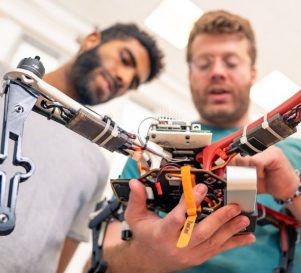Modern tracking systems are required to estimate the distribution of targets in a surveyed scene while coping with a variety of uncertainties, such as unknown number of targets, unknown target motion models, missed detections and clutter (false measurements). An even more challenging tracking scenario may occur when trying to track targets in a scene with Field-of-View (FOV) constraints. Such situations may arise in urban environments including man-made occlusions (e.g., buildings), or in environments involving topographic constraints (e.g., mountains). In such situations the tracking system needs to reason about information not readily accessible, when the target resides in unobserved regions of the environment.
We address the problem of tracking a single, non-maneuvering target, moving through a scene containing unobserved regions that are a priori known to the tracker. A modified Probabilistic Data Association (PDA) filter is developed, that can take into account unobserved regions, in addition to target originated measurements, missed detections, and clutter. The modification is based on a “negative” information concept, whereby expected but actually missing measurements in a scene containing unobserved regions may be regarded as useful information that can be exploited by the tracking system. In order to use this kind of information it is formulated as a fictitious measurement that embodies the essence of the “negative” information. The fictitious measurement, and its associated measurement noise covariance, are formulated based on the hidden region’s geometry. This measurement is used to update the target estimated state and error covariance by using a regular Kalman filter approach within the standard PDA framework.
The performance of the modified PDA filter is studied via numerical simulations. The simulations demonstrate track continuity when the target resides in occluded regions, with a controlled growth of the associated error covariance, thus facilitating robust tracking when the target becomes detectable again.










